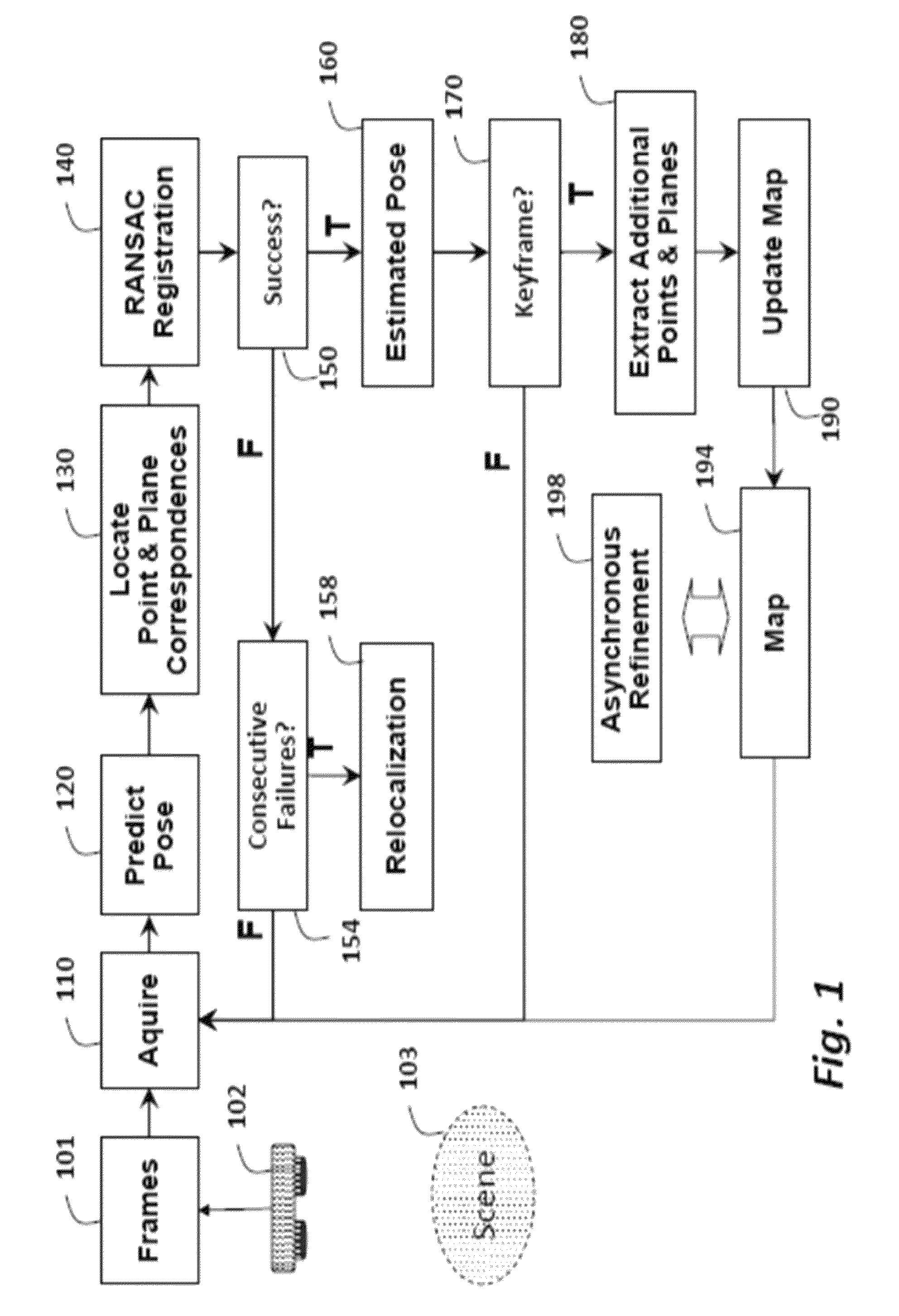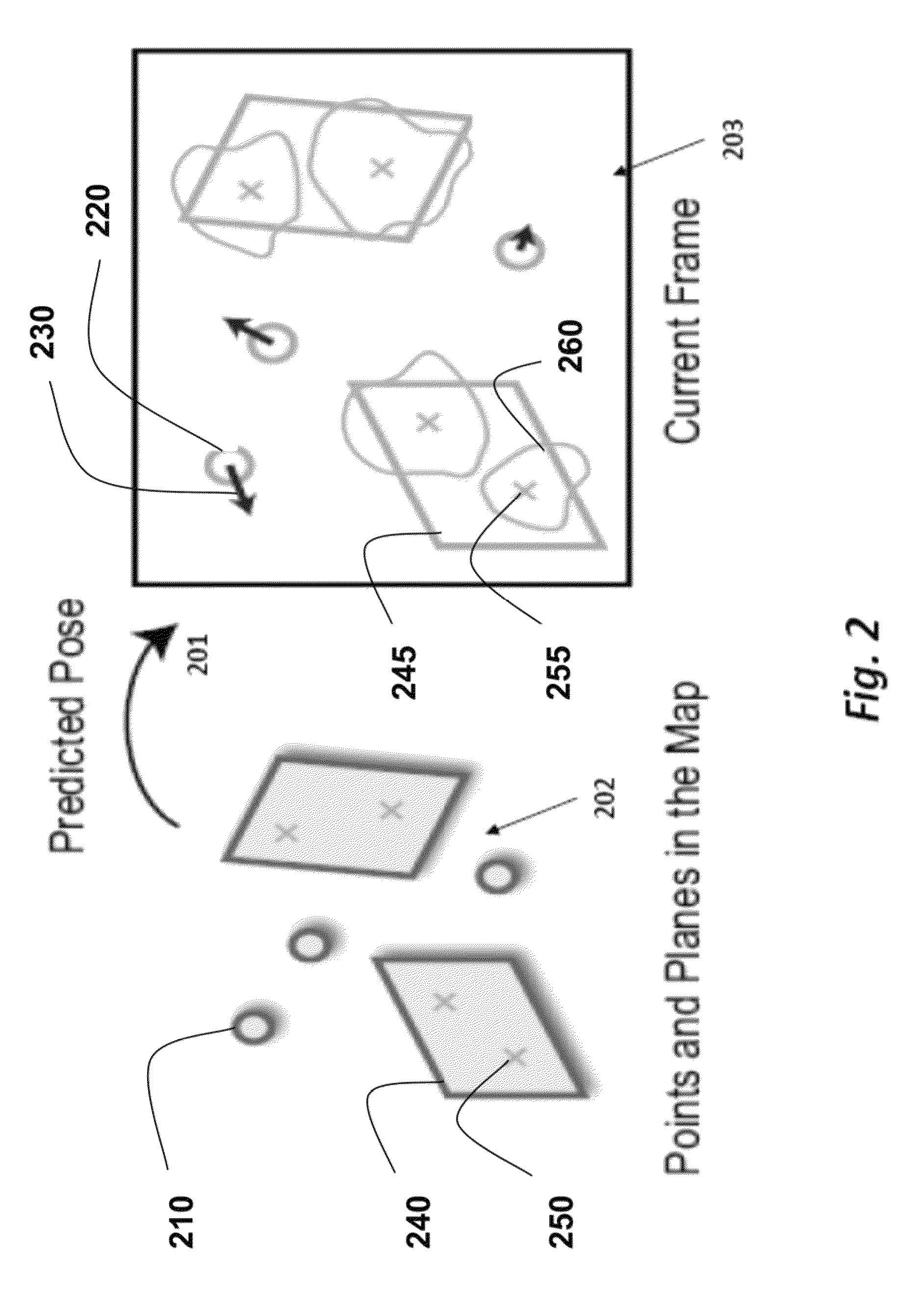Tracking poses of 3D camera using points and planes
a 3d camera and point plane technology, applied in the field of computer vision, can solve the problems of many methods not clearly addressing the difficulty of reconstructing 3d models, icp-based systems often fail, and the like, and achieve the effect of minimizing degeneracy issues causing registration failures and fast and accurate registration
- Summary
- Abstract
- Description
- Claims
- Application Information
AI Technical Summary
Benefits of technology
Problems solved by technology
Method used
Image
Examples
Embodiment Construction
[0020]The embodiments of our invention provide a system and method for tracking a pose of a camera. The invention extends the embodiments described in our related U.S. application Ser. No. 13 / 539,060 by using camera motion prediction for faster correspondence search and registration. We use point-to-point and plane-to-plane correspondences, which are established between a current frame and a map. The map includes points and planes from frames previously registered in a global coordinate system. Here, our focus is on establishing plane-to-plane correspondences using camera motion prediction as well as on a mixed case to establish both point-to-point and plane-to-plane correspondences.
[0021]System Overview
[0022]In the preferred system, the RGB-D camera 102 is a Kinect® or an ASUS® Xtion PRO LIVE, which acquires a sequence of frames 101. We use a keyframe-based SLAM system, where we select several representative frames as keyframes and store the keyframes registered in a single global ...
PUM
 Login to View More
Login to View More Abstract
Description
Claims
Application Information
 Login to View More
Login to View More - R&D
- Intellectual Property
- Life Sciences
- Materials
- Tech Scout
- Unparalleled Data Quality
- Higher Quality Content
- 60% Fewer Hallucinations
Browse by: Latest US Patents, China's latest patents, Technical Efficacy Thesaurus, Application Domain, Technology Topic, Popular Technical Reports.
© 2025 PatSnap. All rights reserved.Legal|Privacy policy|Modern Slavery Act Transparency Statement|Sitemap|About US| Contact US: help@patsnap.com



